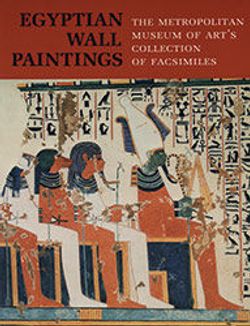Women at a Banquet
Twentieth Century; original New Kingdom
This detail of a banquet scene shows a female guest offering another guest a yellow mandrake fruit, which the ancient Egyptians associated with love and sexuality. The fruit has a pleasing smell when ripe, while the mandrake plant itself has hallucinogenic and aphrodisiac effects but is toxic. Several lotus flowers are also depicted. Each headband features a lotus bud, and two guests hold a lotus flower; one is open (though partially destroyed), and another is closed. The lotus flower, which also has a pleasing scent, was a symbol for regeneration and rebirth because its petals open and close every day. Additionally, the Nymphaea species of lotus has narcotic properties and may have been used to achieve an altered state.
Due to rights restrictions, this image cannot be enlarged, viewed at full screen, or downloaded.


